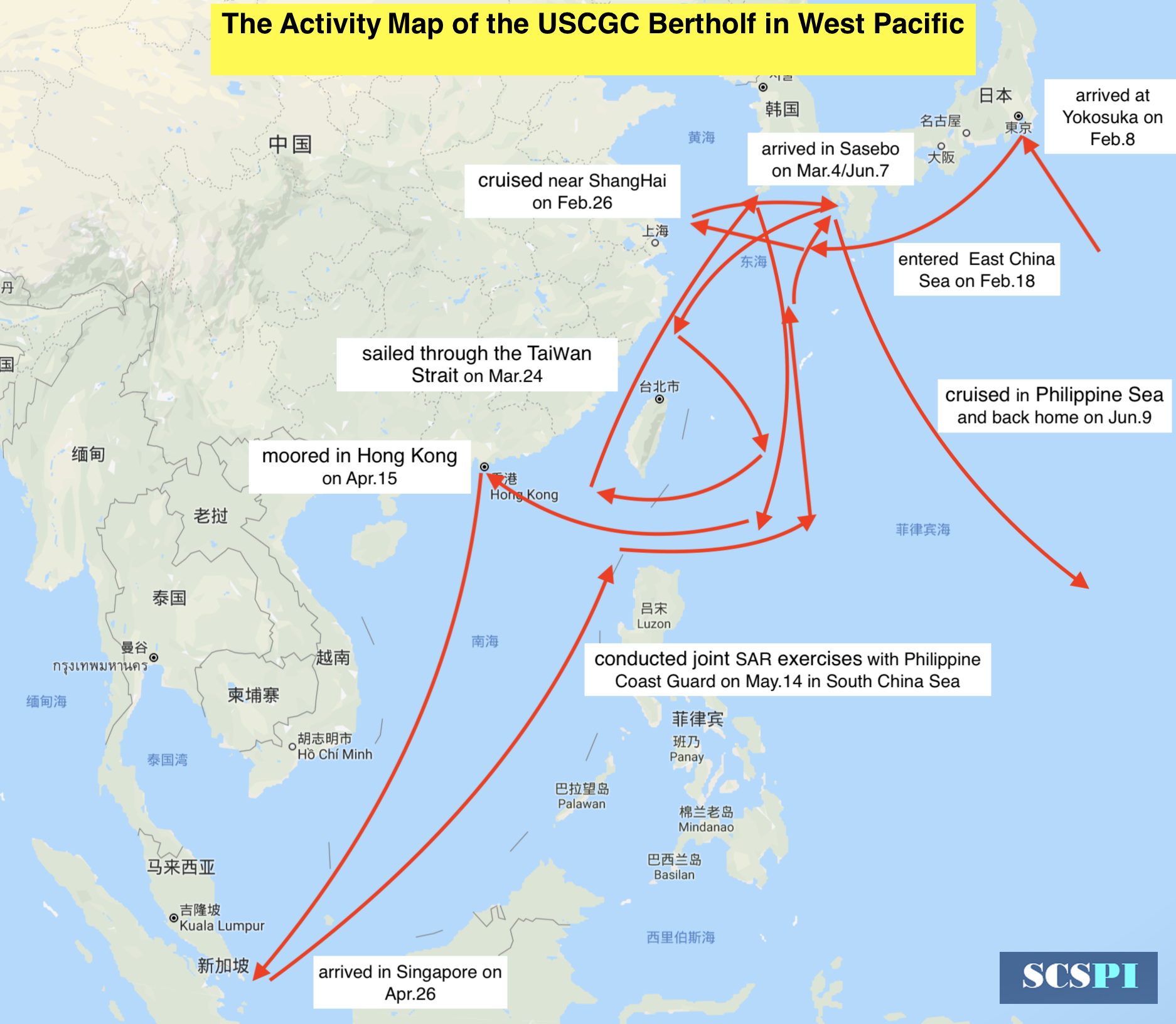Since March of 2020, the U.S. has been sending several civilian contractor surveillance aircraft to monitor China’s near seas: a Tenax Aerospace CL-604, a Lasai Aviation CL-650, and a Meta Special Aerospace B350.
Carrying out intensive operations over the Yellow, East and South China Seas during deployment, these contractor surveillance planes, especially under the backdrop of the growing U.S.-China strategic competitions, are worth studying.
Three contractor surveillance aircraft and their companies
1. Tenax Bombardier CL-604 maritime surveillance aircraft
On the evening of March 31, a Tenax Aerospace Bombardier CL-604 maritime surveillance aircraft (N9191), from Donaldson Center Airport in Greenville, South Carolina, arrived at Kadena Air Base in Okinawa, after stopovers at Bozeman Belgrade Airport in Montana, Elmendorf Base in Alaska, and Misawa Air Base in Japan.
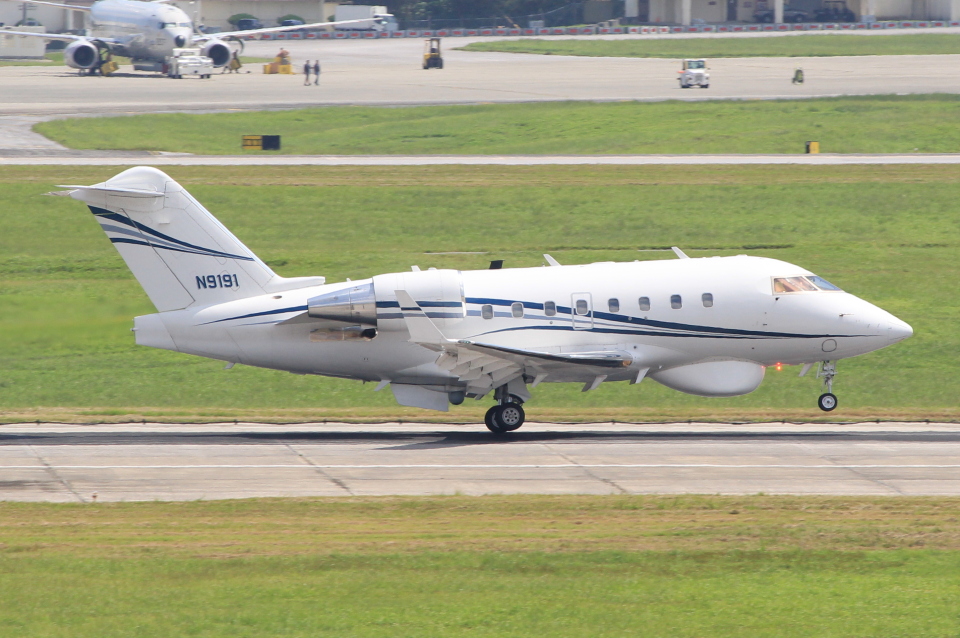
Tenax Bombardier CL-604
Source:キイロイトリさん|flyteam.jp
The Bombardier CL-604 maritime surveillance aircraft is a simplified version of the P-8A developed by Boeing Company, with the ability to track, monitor and detect multiple targets at sea. According to Boeing’s official website, the CL-604 maritime surveillance aircraft has a wingspan of 19.8 meters, a length of 21 meters, a height of 6.4 meters, and a high cruise speed of 459+ knots. The crew includes 2 pilots and 3 to 5 mission staff, which can perform reconnaissance missions for up to 8 hours.
On April 7, the CL-604 flied its very first reconnaissance mission over the East China Sea and Yellow Sea; till July 16, it was sent on a South China Sea mission for the first time. As of November 11, the aircraft has made 139 flights to the Yellow Sea, East China Sea and the northern part of the Taiwan Strait, and 17 flights to the South China Sea.
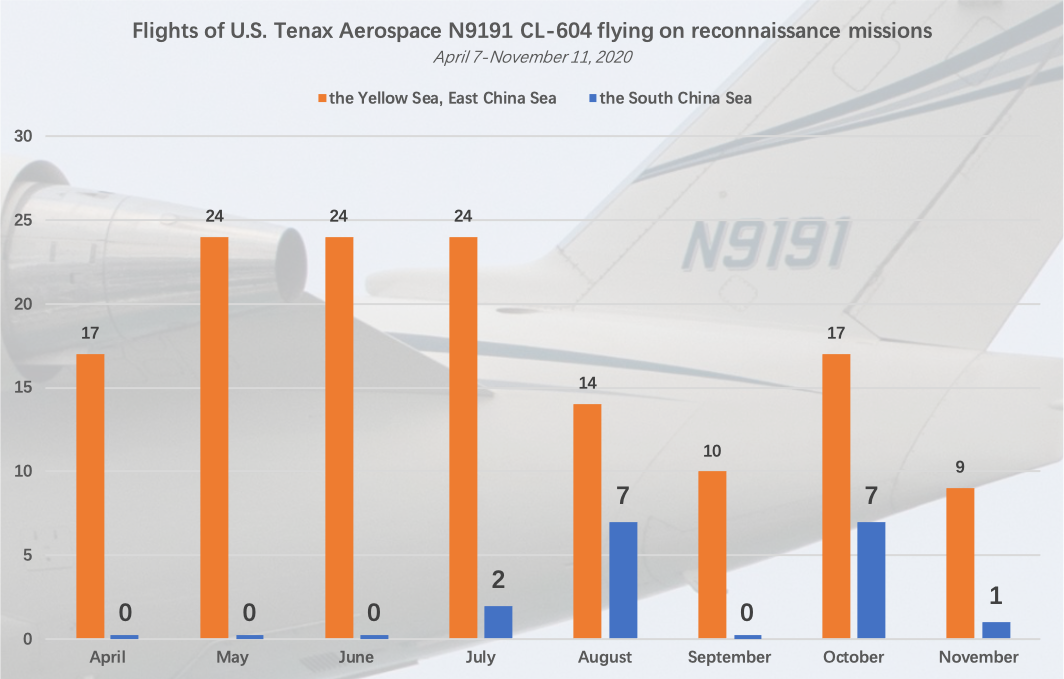
With no capacity of aerial refueling, the CL-604 would usually make a stopover at Filipino Clark Air Base when flying South China Sea missions, to ensure ample time for reconnaissance.
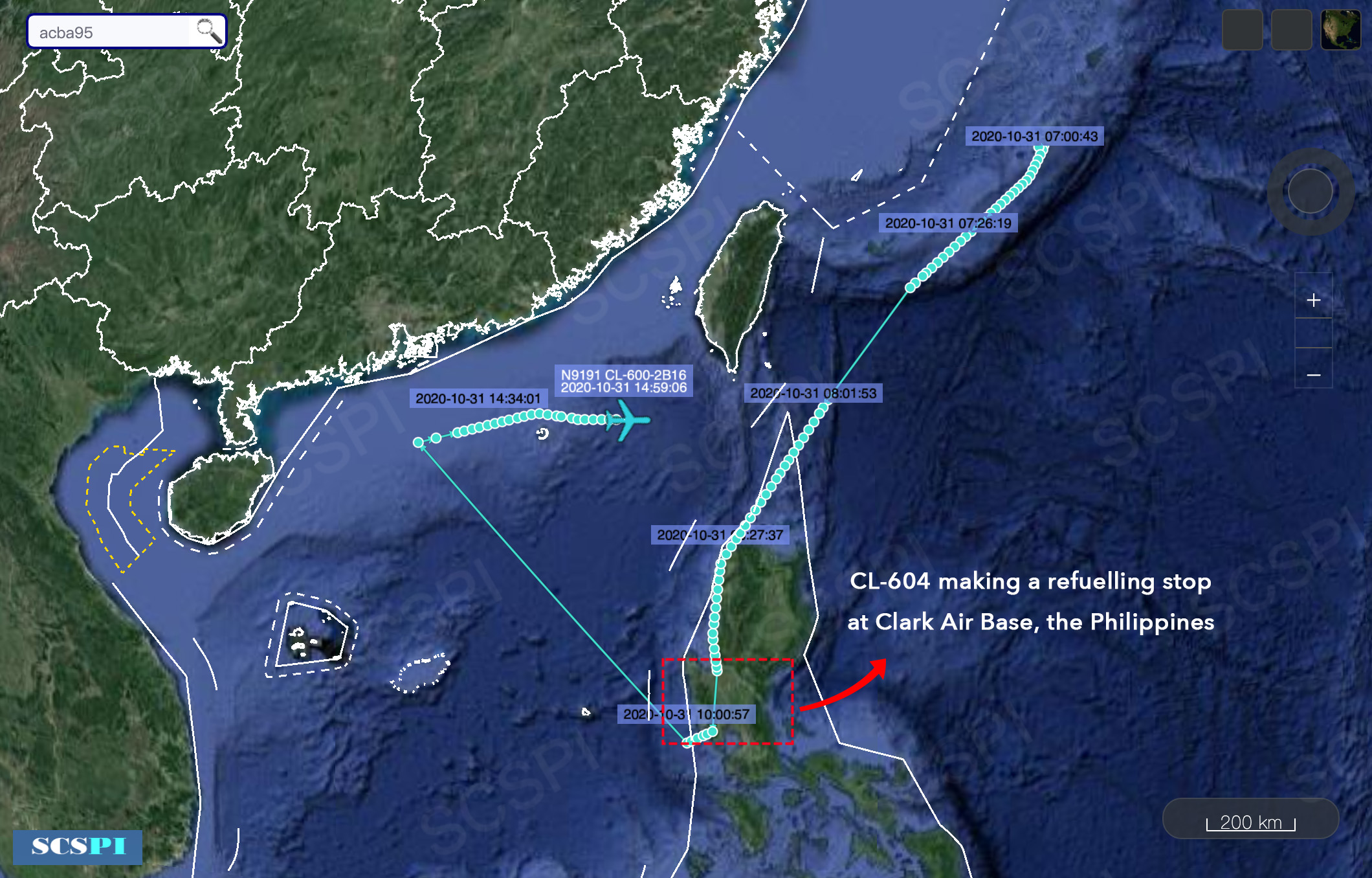
CL-604 making a refuelling stop at Clark Air Base
According to the U.S. Federal Aviation Administration, this aircraft is affiliated with Tenax Aerospace Corporation. Headquartered in Madison, Mississippi, Tenax is a U.S. private-owned company, which focuses on special mission aviation programs critical to national security and the public interest including, but not limited to: aerial fire suppression, aerial intelligence gathering and airborne data acquisition, according to its official website.
Tenax includes experienced leaders with backgrounds in the U.S. military, among which, Director Michael V. Hayden and Charles R. Holland, are particularly noticeable. The former was the director of the CIA and the latter served as the commander of the U.S. Special Operations Command. This company has such inextricable relationships with the U.S. intelligence and the military, that it is not surprising to find its business involves the field of reconnaissance and intelligence.
2. Lasai Aviation Bombardier CL-650 reconnaissance aircraft
On July 29, a Lasai Aviation Bombardier CL-650 reconnaissance aircraft (N488CR), from Manassas Regional Airport in Virginia, arrived at Kadena Air Base in Okinawa, after stopovers at Anchorage Airport in Alaska, the Fort Campbell Ari Base in Kentucky and Misawa Air Base in Japan.

Lasai Aviation Bombardier CL-650
Source:デルタおA330さん|flyteam.jp
On August 3, the CL-650 flied to the East China Sea for its first reconnaissance mission; till August 20, it was sent to the South China Sea for the first time. As of the end of deployment (September 15), the aircraft made 9 flights to the Yellow Sea, East China Sea and the northern part of the Taiwan Strait, 17 flights to the South China Sea, and 9 to South Korea.
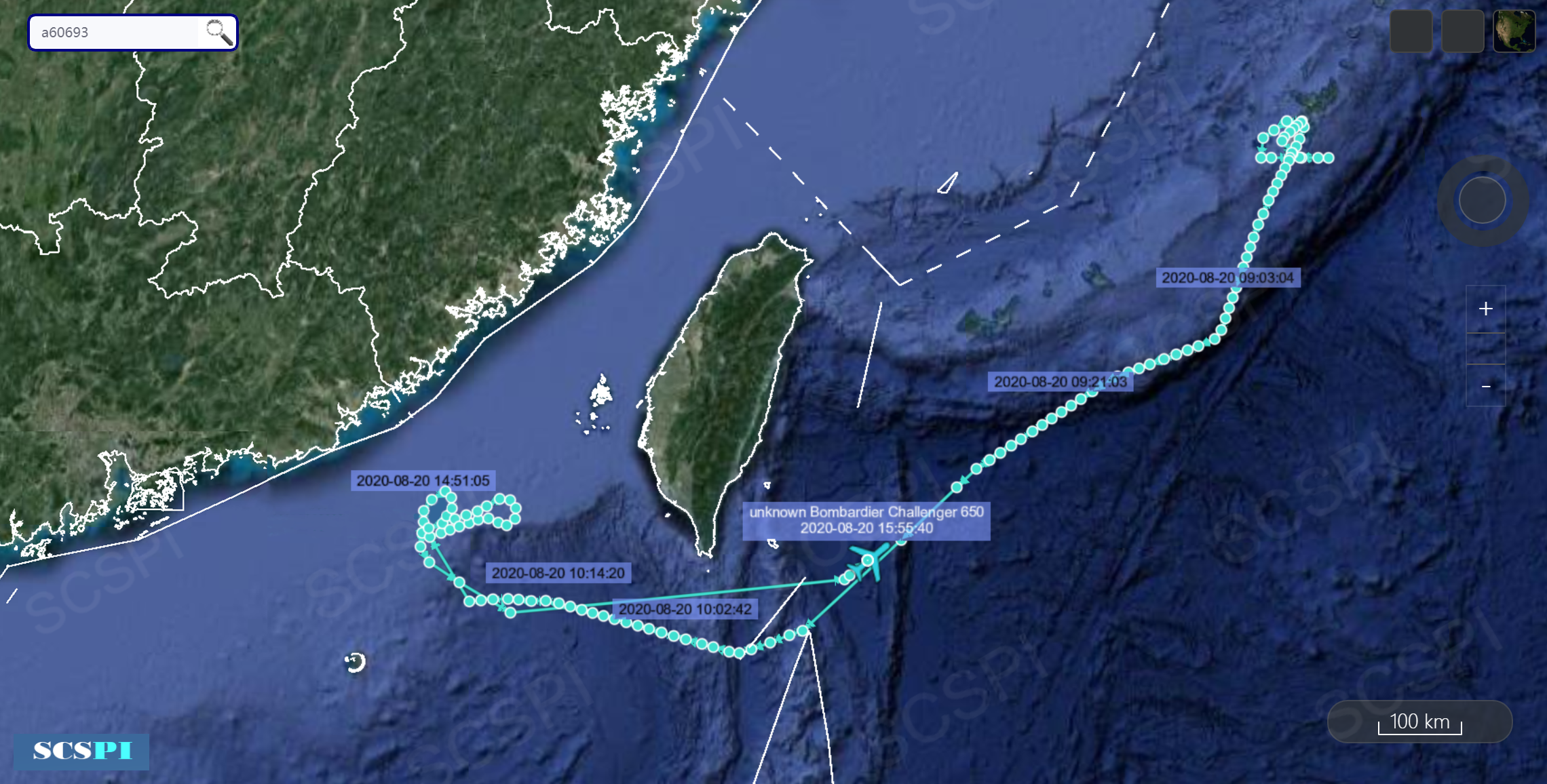
CL-650 flying on a South China Sea mission, Aug 20
On September 18, this N488CR CL-650 was sent to Constanta, Romania, starting to fly reconnaissance missions in Europe, whose limited stay in Western Pacific is more likely to be “testing the water”.
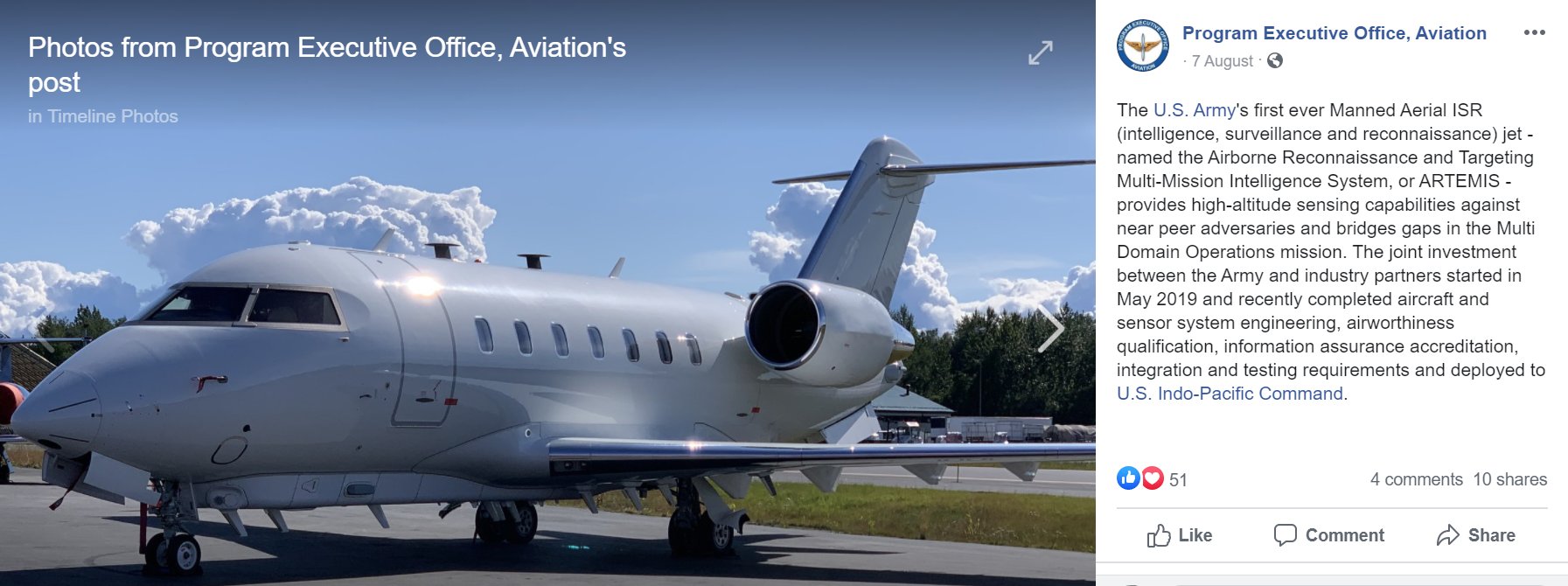
Screenshot of U.S. Aviation Program Executive Office's post
On August 6, the U.S. Aviation Program Executive Office revealed via social media that: The U.S. Army’s first ever manned aerial ISR (intelligence, surveillance and reconnaissance) jet, named the Airborne Reconnaissance and Targeting Multi-Mission Intelligence System (ARTEMIS), had been deployed to U.S. Indo-Pacific Command with an accompanying picture of N488CR CL-650. “It provides high-altitude sensing capabilities against near peer adversaries and bridges gaps in the Multi Domain Operations mission.”
The CL-650 is equipped with a High-Accuracy Detection and Exploitation System, or HADES, a sensor suite part of the Army Multi-Domain Sensing System (MDSS), “intended to address the Army’s deep sensing requirement by providing platform agnostic sensors that support Multi-Domain Operations (MDO), including Large Scale Ground Combat Operations, and fill sensing gaps for Indicators and Warnings, Long-Range Precision Fire targeting and Situational Understanding.” The current HADES mainly focuses on electronic intelligence, communication intelligence, and radio-assisted detection and measurement. It can be inferred that this CL-650 has radar reconnaissance and communication reconnaissance capabilities, which can also be confirmed by the long strip radar and multiple communication antennas under its belly.
3. Beechcraft "King Air" 350 low-altitude reconnaissance aircraft
On the afternoon of August 18, a Meta Special Aerospace "King Air" Beechcraft 350 low-altitude reconnaissance aircraft (N334CA), from Wiley Post Airport in Oklahoma City, headquarters of Meta Special Aerospace, arrived at Manila Airport in the Philippines, with stopovers at Anchorage International Airport in Alaska, Chitose Air Base in Japan, Haneda Airport in Tokyo, Naha Airport in Okinawa.
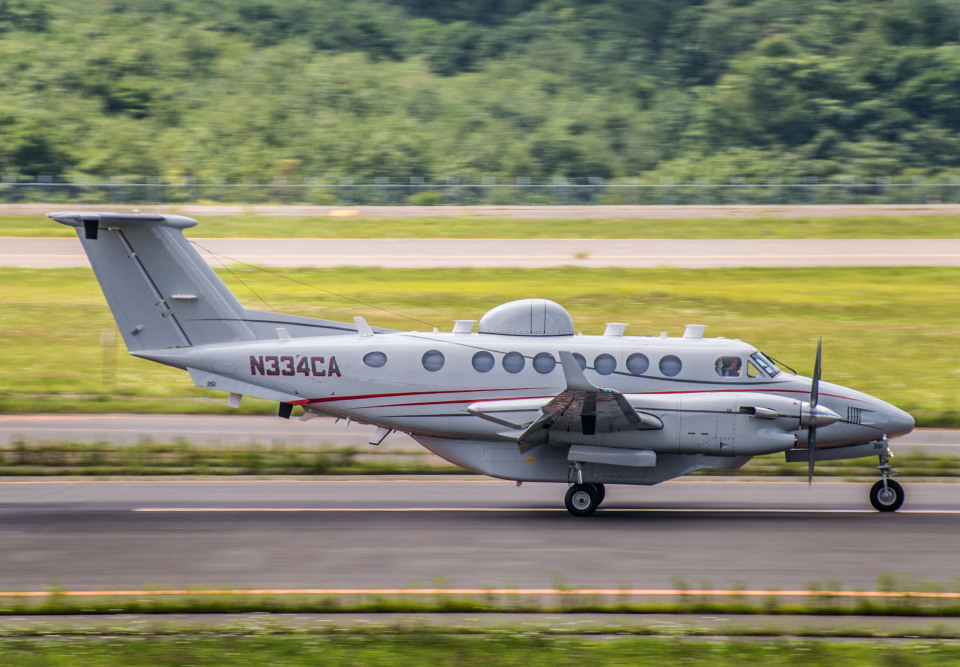
Meta Special Aerospace Beechcraft "King Air" 350
Source:Cygnus00さん|flyteam.jp
The B350 mainly carried out surveillance missions over Mindanao, the Southern Philippines, from Manila.
Meta provides services for sensitive overseas missions in support of U.S. Special Operations Forces. Its business is mainly divided into two parts: signals intelligence, which provides ISR support through MSA’s fleet of three King-Air B200/B350s, and human intelligence, which includes exercise services on counter-surveillance, surveillance, detection and interrogation.
The B350 deployed to Manila is the company’s latest low-altitude reconnaissance aircraft. The crew includes 2 pilots and 1 scout. It is equipped with the MX-15DiD EO/IR camera, LOS/BLOS video and data link, and a suite of HF and angle-adjustable Mode 0-3 antennas, which allows for simultaneous collection and communication across the entire spectrum. Three Mil-Std Harris PRC-117F/G UHF/VHF/SATCOM radios capable of secure/non-secure communications.
Why are the U.S. sending civilian contractor aircraft?
1. Enhancing the military-civilian joint combat capability
The United States is the country with the highest degree of military-civilian fusion in the world, with U.S. private defense companies deeply involved in U.S. military operations worldwide.
Since the beginning of 2020, the U.S. military has particularly built up aerial reconnaissance on China. As the current Sino-U.S. military confrontation simmers in the Asia-Pacific, the potential systemic risks are increasing.
U.S. private contractor surveillance aircraft joining in reconnoitering on China, on the one hand, could help acquaint themselves with the electronic combat environment of China’s surrounding areas. On the other, it could provide real-time intelligence support for the activities of the U.S. military. Thus, it enhances the military-civilian joint combat capability.
In terms of logistical supplies, the Tenax CL-604 maritime surveillance aircraft will briefly land at the Clark Air Base in the Philippines for oil replenishment each time it’s on a South China Sea mission, prolonging its endurance to around 10 hours to guarantee sufficient reconnaissance.
2. Dealing with the so-called "gray zone" challenges
In recent years, the United States has been accusing China’s coast guard and maritime militia engaging in so-called "gray zone" competition, which poses a serious "threat" to the security to U.S. military operations. Compared with the U.S. Navy and Air Force, the private contractor surveillance aircraft have greater flexibility in dealing with “gray zone” competition, avoiding the diplomatic pressure caused by direct military confrontation.
However, the “gray zone” has been a concept which the U.S. enforces loosely with itself but strictly with others. Lately, the United States has been applying "gray zone" forces in the South China Sea to contend with China.
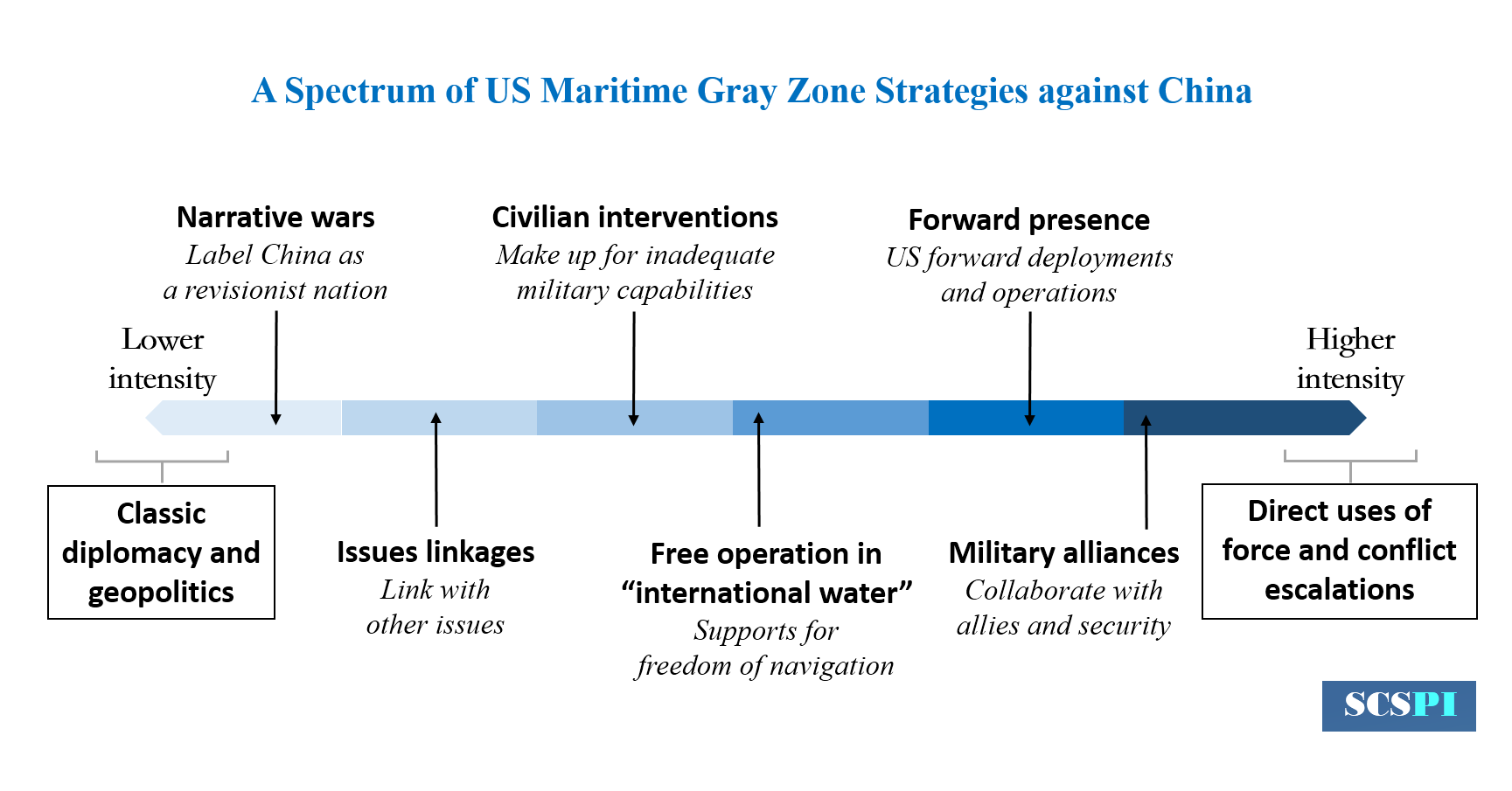
Further reading: US Maritime Gray Zone Operations against China by Chen Yong
In 2019, it deployed two U.S. Coast Guard cutters to patrol the South China Sea; entering 2020, it dispatched private defense company's surveillance aircraft to China’s near seas, which undoubtedly shows that the U.S. is rapidly expanding its toolbox in dealing with the so-called "gray zone" challenges in China's surrounding areas, and it will step up its presence in the Asia-Pacific region through a collaboration among the military, coastguard and private security sector.
Tracks of USCGC Bertholf in the West Pacific, 2019
It is worth noting that, compared with large military reconnaissance aircraft such as P-8A, the civilian modified surveillance aircraft still keeps its previous dressing, moreover, considering the advantage of compact size (wingspan and length are only half of the P-8A), they are often less noticeable and more flexible when performing reconnaissance operations.
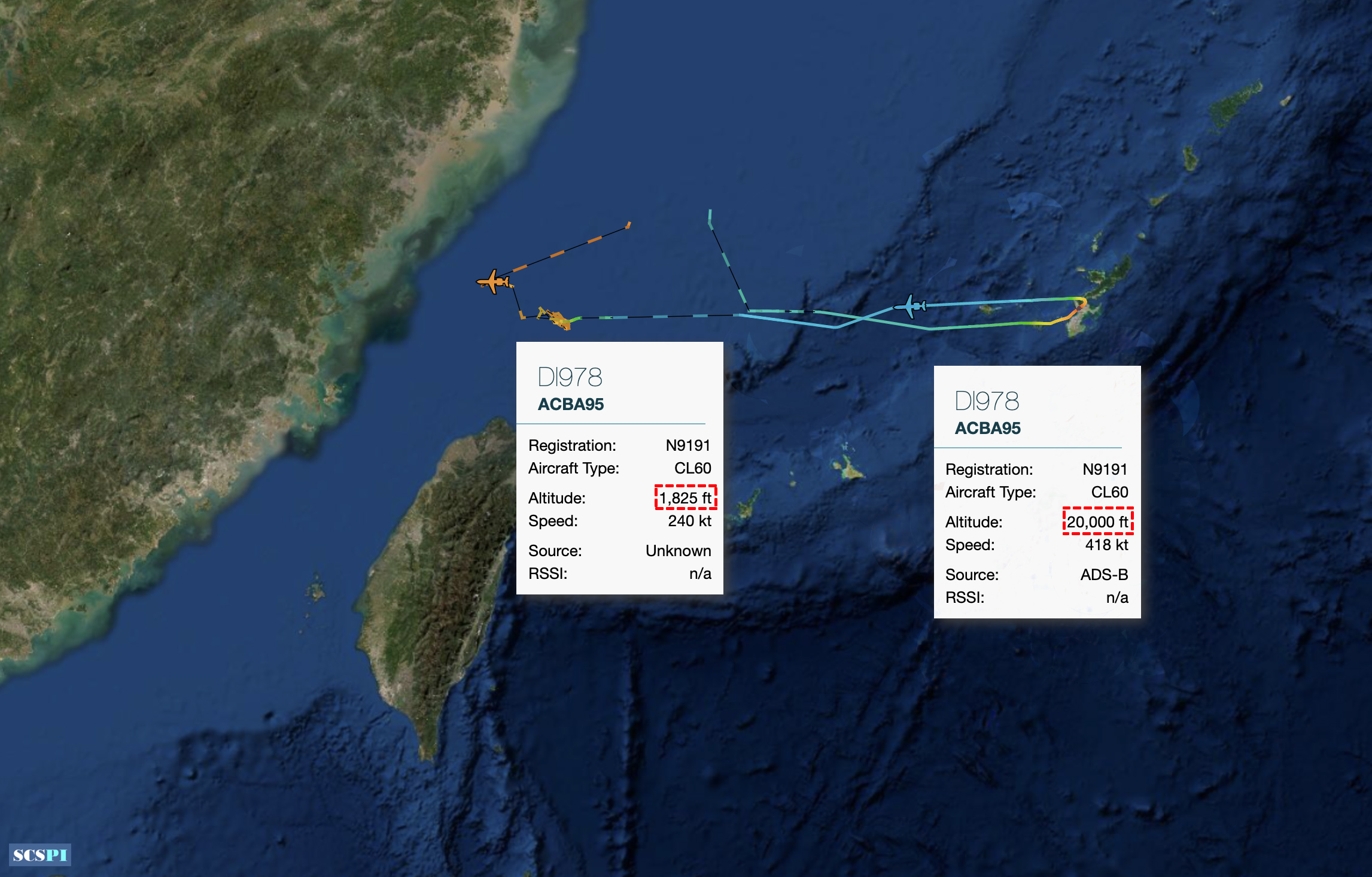
CL-604 conducting low-altitude reconnaissance after approaching China's coastlines
Generally, after approaching the coastline of China, the CL-604 gradually drops from an altitude of 20,000 feet to below 5,000 feet, or even 1,000 odd feet (304.8 meters), utilizing the low-altitude advantage to conduct high-intensity close-in reconnaissance on China.
3. Alleviating the shortage of U.S. aerial reconnaissance capabilities in the region
Considering its intensified policy on the South China Sea, the U.S. military seems to be in shortage of reconnaissance aircraft, despite making the most of the current whole range of RC-135, E-8C, U-2S, RQ-4B, P-8A, P-3C, EP-3E, MQ-4C, and etc.
U.S. private contractor surveillance aircraft, has cultivated with rich battlefield reconnaissance experience and professional backbones, as a large number of which have been deployed to the Middle East and North Africa for years. Their intelligence capabilities are on a par with U.S. military to some extent. By complementing each other, they can join the U.S. military to form effective cooperation.

